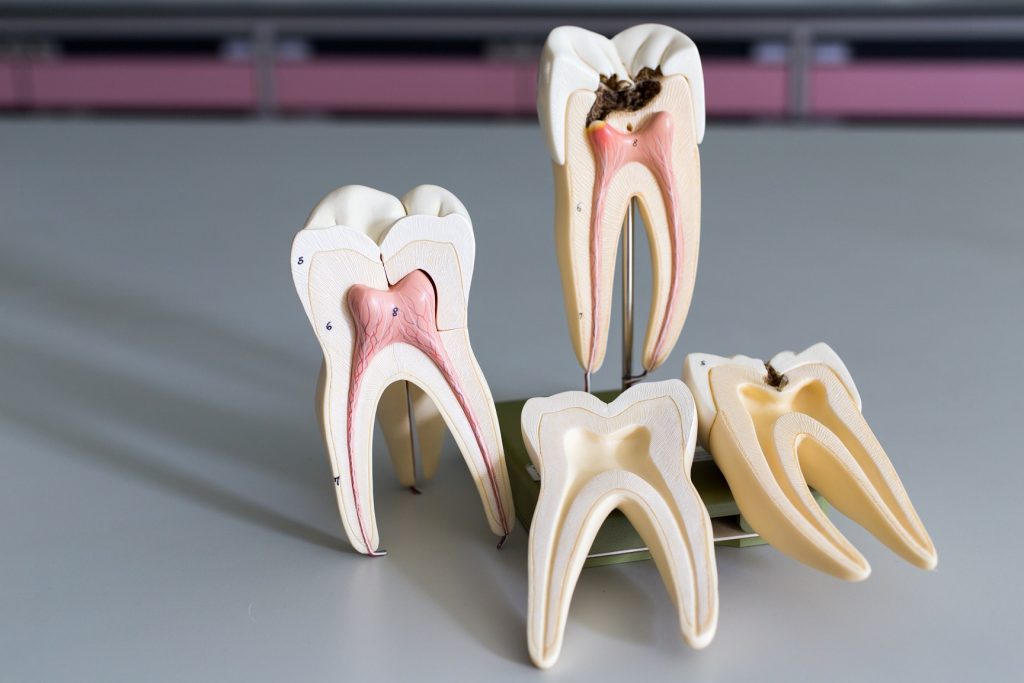Root Canal
While you work very hard, with your dentist, to establish and maintain good oral health, tooth damage due to decay or injury can still sometimes happen. And though tooth extraction and replacement options and procedures do exist, your dentist’s primary goal in treating a tooth that has been damaged by injury or decay is to save your natural tooth whenever possible. In many cases this can be done through a variety of procedures, including dental fillings, inlays and onlays, but where tooth decay is particularly severe, a root canal may be necessary and appropriate.

The Root Canal Procedure
Your dentist will likely recommend a root canal if your tooth is suffering from extensive infection that affects the pulp deep within your tooth. This infection may be the result of an injury that has allowed bacteria to move into the tooth pulp, or it may be the result of a cavity that has gone untreated for a lengthy period of time. If left unhandled, the damage to the tooth can spread down the root to the bone and effectively destroy all remaining structure so that the tooth must be extracted. On the other hand, a root canal will allow the dentist to remove all decayed tooth pulp and infection so that the basic structure and function of the tooth remains intact and tooth extraction is unnecessary.
Since your dentist will be unable to see the extent of tooth decay present through a simple visual examination of your mouth, he will take x-rays when he suspects that deep infection is occurring. In reviewing these x-rays he will get a much better understanding of the situation and exactly how the root canal must be performed in order to achieve success.
Once your dentist has determined that a root canal is necessary, he will discuss his diagnosis and treatment plan with you, answering any questions you may have. Then he will have you schedule an appointment for the procedure. The root canal procedure itself consists of four main steps:
- Anesthesia. Your dentist will use local anesthesia in order to numb the tooth and make the root canal procedure more comfortable for you. After administering the local, your dentist may use a dental dam in order to keep your tooth clean and dry throughout the procedure.
- Cleaning. Your dentist will use various tools and techniques to access the inner area of the tooth for cleaning. His goal is to remove all infected and damaged pulp so that future reinfection cannot occur. In some cases he may choose to use a sort of file in order to shape the inner chamber of the tooth and root so as to more thoroughly ensure that it is fully clean and there are no hidden areas where bacteria remains. He may also choose to use an antibacterial solution in order to kill any potential remaining bacteria and further protect against the possibility of reinfection.
- Filling. With the inner tooth chamber thoroughly cleaned and dried, your dentist will fill it with a material to help protect and strengthen it. He will then seal the opening with a temporary filling or crown until your permanent crown has been fabricated and can be placed.
- Finishing. Your permanent crown further ensures the structure and function of your restored tooth, and is fabricated in a dental laboratory based on a tooth impression your dentist takes. In some cases, your dentist may choose to place a support post inside the tooth chamber in order to stabilize your tooth.
Following a Root Canal
After your root canal procedure is complete, your dentist will take special care to ensure you understand the importance of maintaining excellent oral hygiene habits. This includes twice daily brushing, once daily flossing and twice yearly dental examinations and cleanings. Good oral hygiene habits are absolutely essential in protecting the health of not only the restored tooth, but also all the other teeth and soft tissues in the mouth.
A root canal is one of the more extensive dental restoration procedures, but proper oral care can ensure that a tooth that has received a root canal remains healthy and functional long into the future. For more information about root canals, contact Dr. Nurminsky today.

